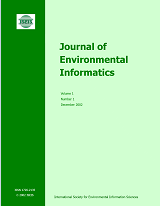doi:10.3808/jei.202000428
Copyright © 2024 ISEIS. All rights reserved
A Stochastic Optimization Model for Carbon-Emission Reduction Investment and Sustainable Energy Planning under Cost-Risk Control
Abstract
Restricted by conventional energy resources and environmental space, the sustainable development of urban power sector faces enormous challenges. Renewable energy generation and carbon capture and storage (CCS) are attractive technologies for reducing conventional energy resource consumption and improving CO2 emission mitigation. Considering the limitation of expensive investment cost on their wide application, a stochastic optimization model for the optimal design and operation strategy of regional electric power system is proposed to achieve conventional resource-consumption reduction and CO2 emission mitigation under cost-risk control. The hybrid method integrates interval two-stage stochastic programming with downside risk theory. It can not only effectively deal with the complex uncertainties expressed as discrete intervals and probability distribution, but also help decision-makers make cost-risk tradeoff under predetermined budget. The proposed model is applied in the electric power system planning of Zhejiang Province, an economically developed area with limited fossil energy resources. The influences of different resource and environmental policies on the investment portfolio and power system operation are analyzed and discussed under various scenarios. The results indicated that different policies would lead to different generation technology portfolios. The aggressive CO2 emission reduction policy could stimulate the development of CCS technology, and the electric power system would still heavily rely on coal resource, while the tough coal-consumption control policy could directly promote regional renewable energy development and electric power structure adjustment.
Keywords: CCS, renewable energy, generation expansion programming, policy regulation, risk-aversion
Supplementary Files:
Refbacks
- There are currently no refbacks.
